Pontiac learned – the hard way – that bringing back a name is sometimes not enough. In the early 2000s, the late (and once great) GM division resurrected the iconic GTO nameplate – and affixed it to a nothing-special car that just didn’t have the muscle car mojo of the original. It lasted three years. Pontiac itself not much longer.
Now comes Dodge – and the resurrected Dart.
Well, the resurrected Dart name.
This one’s going to be really interesting, because this car – leaving any judgments about its goodness aside – is a completely different type of car. The last (1976) Dart was a mid-sized car (by modern standards). It was also RWD – and came standard with a fairly big six.
It could be ordered with a V-8.
The new Dart is a compact – and FWD. It’s powered by no more than a four.
In terms of layout, there’s no generational continuity between the old and the new.
However, there is some conceptual commonality – and that may be enough to make the tie-in. And make the new Dart as big a hit as its namesake was, back in the day. 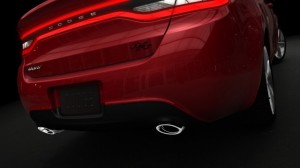
Like the original, the new Dart is a deal (at just under $16k to start, it’s among the least expensive small sedans on the market). Also like the original, it isn’t just an economy car. While there’s no V-8 GTS or Swinger version on the docket, a performance-minded Dart R/T will be available this spring. And just like back in the day – when Dodge offered ultra-mileage versions of the Dart (the Dart Lite – and its Plymouth twin, the Feather Duster), there is a version of the new Dart called Aero in the works that will reportedly deliver at least 41 MPG on the highway – which would be better than anything else in this class that’s not a hybrid or a diesel.
So, even though a lot has changed since ’76, it’s possible enough of the spirit of ’76 has made it through to make this car a player.
We’ll see.
The 2013 Dart is all-new – and one of the first manifestations of cross-pollination with parent company, Fiat. It is a compact-sized, FWD sedan available with three different four-cylinder engines – one of them a Fiat-sourced 1.4 liter turbo with “MultiAir” technology; same engine as used in the Fiat 500 Abarth.
Prices start at $15,995 for the base SE with 2.0 liter engine and six-speed manual transmission.
Next up is the $17,995 to start SXT – available with either the 2.0 engine or (optionally) the punchier (and more fuel-efficient) 1.4 liter turbo four.
You can also order a six-speed automated manual with this engine.
For now, the top-of-the-line Dart is the Limited – which also offers either the 2.0 or 1.4 turbo engine. Base price is $19,995.
The performance-minded R/T comes out this spring. It will be based around a more powerful 2.4 liter engine unique to this model. Pricing hadn’t been announced at the time of this review but will likely start around $21k.
There will also be a super high-mileage version of the Dart called the Aero – which will be capable of 41 MPG on the highway with the 1.4 liter turbo engine. That model will also be available later this year (spring/summer).
Expect the MSRP to be somewhere in between the SXT and the Limited.
The Dart is a new addition to Dodge’s lineup – effectively replacing the slow-selling Caliber hatchback wagon.
In terms of size and layout, though, the Dart is more like the old Dodge Neon – which was a compact-sized sedan.
Target competition includes other small sporty-stylish sedans like the Mazda3, Hyundai Elantra, Ford Focus, Honda Civic and Chevy Cruze.
WHAT’S GOOD
Lowball base price.
41 MPG capable.
You don’t sit down low, bathtub-style.
You can rest your left arm on the top of the door frame when the window’s down.
For once, easy-to-use electronics.
41 MPG capable – with extra-cost engine.
Sluggish acceleration with base engine.
At least 200 pounds too heavy.
UNDER THE HOOD
All Darts except the performance-minded R/T come standard with a 2.0 liter, 160 hp four. It can teamed up with either a six-speed manual or six-speed automatic.
This engine is as or more powerful than the standard engines in competitor models like the Ford Focus (2.0 liters, 160 hp), Mazda3 (2.0 liters, 148 hp), Chevy Cruze (1.8 liters, 138 hp) and Hyundai Elantra (1.8 liters, 148 hp). Unfortunately, the Dart is also heavier than all these cars – in the case of the flyweight (2,661 lbs.) Elantra, a lot heavier.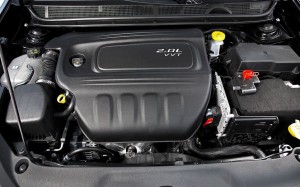
At 3,186 lbs., the 2013 Dart weighs an astonishing 525 lbs. more than the Hyundai. Which explains why the Hyundai’s performance is slightly better (0-60 in 9.4 seconds vs. about 10 flat for the Dart) and also its fuel economy (29 city, 40 highway vs. a so-so 25 city, 36 highway) despite the Dart’s 12 hp advantage.
It’s a similar story vis-a-vis the Mazda3 and others in this segment. The Dart is really heavy for a compact. For some perspective, the new Dart – a compact FWD car – is several hundred pounds heavier than the ’70s-era RWD, six-cylinder-powered and mid-sized (by current standards) Dart.
The weight is why you have to buy the Dart’s optional turbo 1.4 liter engine to get better performance than the base-engined versions of competitor models.
And also to get better mileage.
The step-up 1.4 liter engine – identical to the engine in its Italian cousin, the Fiat 500 Abarth – makes the same 160 hp as the base engine, but 184 lbs.-ft. of torque vs. 148 lbs.-ft. for the base engine. It’s available with your choice of either the six-speed manual, a conventional six-speed automatic or a six-speed automated manual, which combines the sporty operating feel of a manual with the ease of operation of an automatic. This transmission is not available with the 2.0 engine in base trim Darts.
Though not marketed as a performance engine (primarily) in the Dart, the Fiat-sourced 1.4 turbo does endow the Dart with noticeably upticked performance: 8.3 seconds to 60. That’s not as quick as the Abarth 500 – which you’d expect given the Dart weighs about 600 pounds more than the 2,600 lb. Fiat. But it is plenty quick enough to beat most of the other cars in this segment – including the Mazda3 equipped with its extra-cost “SkyActive” 2.0 engine (8.5 seconds). The only other car that can match the 1.4-equipped Dart’s 0-60 run is the manual-equipped Ford Focus, which does the deed in exactly the same 8.3 seconds.
And it should be noted that several competitors in this segment – such as the Hyundai Elantra as well as the Toyota Corolla – don’t offer an engine upgrade at all. The Slows are standard – and optional – equipment in those cars.
The 1.4-equipped Dart also returns very good gas mileage: 27 city, 39 highway. Only two competitors do better – and not by enough that you’d notice in real-world driving. The Elantra, for instance, rates 29 city, 40 highway – and the Mazda3 with its extra-cost SkyActive engine returns 28 city, 40 highway. And that’s as good as they get.
Meanwhile, Dodge intends to one-up them all – literally – with the max-effort 41 MPG (or better) Dart Aero. Probably the only other car in the segment that can match – or exceed – that will be the Sky-D (diesel) version of the Mazda3, slated to appear sometime later in 2013.
Finally, we come to the R/T. Or rather, we’ll come to it this summer – because it’s not available yet. Preliminary word is it will have a 2.4 liter, 184 hp engine and the buyer’s choice of six-speed manual or the six-speed automated manual. As of now, the only other car in this class with similar punch is the Si version of the 2013 Honda Civic. But a comparison of each car’s merits will have to wait – because neither is out yet.
So many new cars are so fundamentally alike it is sometimes as challenging as doing differential equations to come up with any meaningful differences to write about.
Which is why it was something of a relief to notice right away the pleasantly retro seating position you find inside the Dart. The door tops are low – and the seats themselves mounted pretty high – the net effect being you can rest your left arm on the top of the driver’s side door when the window’s down – perfect for summer-time one-hand-on-the-wheel cruising. I haven’t been able to do that in a modern car since I began reviewing modern cars more than 20 years ago. Most manufacturers build their cars with doors that almost seem to come up to the roofline, so that you feel you’re sitting in a bathtub, trying not to be seen. This is probably marvelous for side-impact crashworthiness, but it makes the car – especially if it is a small car – feel very claustrophobic.
You do not feel this way in the Dart.
You also won’t feel much in the way of g forces when you accelerate – at least not with the base 2.0 engine and especially not when the base 2.0 engine is teamed up with the six-speed automatic. But then, speed is not what the Dart’s about. Or at least, not the volume models. And for those who do feel a need for speed, the R/T – when it arrives in a few weeks – will serve the same role as the GTS and Demon versions of the classic Dart did back in the day.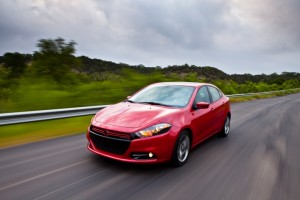
Besides, 10 seconds to 60 is quickly becoming the new normal – chiefly because of the converging needs to achieve 35.5 MPG on average (by 2016) while also maintaining crashworthiness as per Uncle. Smaller engines in heavier cars almost axiomatically means increasingly tepid acceleration. But, some context is needed. While it’s true new cars are – in general – getting slower, they aren’t slow. Certainly not by historical standards. Back in the days of the last Dart – the early-mid ’70s – economy cars often needed 15-plus seconds to get to 60 and even V-8 powered cars were often not much quicker than today’s four-cylinder Dart.
So, the Dart, while not quick in absolute terms, is (like the other cars in this segment) quick enough to deal with normal A to B driving.
And then some, actually.
One big difference between the new Dart and its ancestor is the ease with which it achieves – and comfortably maintains – fairly high speed. Eighty-plus is no problem. 100-plus readily accessible. With the 2.0 engine. And that’s certainly plenty for daily driving.
The turbo’d 1.4 has more kick, of course. And the soon-to-be-here R/T will have even more. So, there’s a Dart for almost every taste – just like back in the day.
Oh, and remember that business about the Dart’s curb weight? The fact that it is heavier than pretty much all its competition? While the extra beef does dial back what the Dart would otherwise be capable of both performance-wise and economy-wise, it also endows the car with the heft – the plantedness – of a larger car. Light is good when it comes to many things, but it can also result in a car that bounces a bit more when it hits a ripple – and which is more susceptible to being pushed around by a strong crosswinds. The extra couple hundred pounds – along with an Italian-tuned suspension – make the Dart a very pleasant (because bigger-feeling) car to drive.
At the time of this review, only a few performance-handling enhancements (such as 17 inch wheels) were available, but my Dart Rallye – which came with the larger 17 inch wheel/tire package – tackled corners at more-than-lawful speeds with composure equivalent to the sportiest cars in this segment (Mazda3) and without the early-onset tire squeal and frantic TCS intervention I encountered in doughboys like the Corolla.
It definitely has a lot of potential – and I expect the R/T version will realize that potential.
This car has no “bad side” – just better sides.
Front and rear, actually.
From either vantage point, the Dart is a good-looker.
The tail has Challenger-Charger-esque wraparound tail-lights and a cleanly integrated trunk spoiler lip that bleeds off from the bone lines that run down the car’s flanks. Fatty pressed oval exhaust tips add a further sporty touch.
The nosepiece has the Chrysler crossbar in a recessed (and narrow at the top) grille that wide-mouths as it descends to the lower valance – offset on either side by bullet-point driving lights. I think the car looks best from this angle.
But it also looks good from any angle – even if the side profile is something of a letdown, but only because it’s so shy relative to the front and rear clip treatments.
The real treat, though, is inside.
Big breadbox-style dash, into which is fitted the main gauge cluster in front of the driver and then, a bit down and to the right, the iPad-like flat screen for the secondary systems and their controls. Surrounding this is a thin belt of contrast-color piping that’s both original and very cool-looking. And remember the seats? Check this out: The bottom cushions hide storage cubbies. Just pull up on the little tab at the back.
Also very cool – and, original.
More needs to said about the touchscreen interface… about how good it is. In fact, it’s the best such system I’ve encountered in any new car – irrespective of price. The size of the screen alone is helpful, because the touch-icons are not scrunched down and hunkered together into a too-small space.You can clearly see each one – and use each one without accidentally using another one. I generally hate these electronic interfaces – because they almost always make simple tasks such as changing the radio station or adjusting the AC more difficult than dials and buttons, all for the sake of looking “high tech.” Give me low-tech and works every time. But this system is both high-tech and works beautifully. The only thing I would fear – as a buyer – is the potential repair/replacement cost of the screen and whatever’s behind it eight or ten years down the road from now.
I mentioned the Dart is heavier than other cars in this class. It’s also a little bigger than other cars in this class. At 183.9 inches bumper-to-bumper, it is 4.5 inches longer over than a Honda Civic sedan (179.4 inches), 3.2 inches longer than a Mazda3 sedan (180.7 inches), 5.4 inches longer than a Ford Focus (178.5 inches) and 5.6 inches longer overall than the Hyundai Elantra.
The Dart also has a bigger car’s wheelbase – 106.4 inches – vs. 103.9 inches for the Mazda3, 104.3 inches for the Focus and 105.1 inches for the Civic. The Elantra’s wheelbase is close to as long – 106.3 inches – but it’s still a noticeably smaller car. There’s less room to work with, and even though Hyundai does a pretty amazing job with the available real estate (especially up front, where the Elantra boasts a very impressive 43.6 inches of legroom vs. 42.2 for the Dart) the deficit becomes apparent when you cross-reference the backseat stats: 33.1 inches of legroom in the Elantra vs. a much more generous 35.2 inches in the Dart.
The Civic and Mazda3 have comparable (or even slightly greater) interior specs, despite their being slightly smaller on the outside than the Dart.
The Ford Focus – like the Hyundai Elantra – has really cramped back seats (33.2 inches of legroom).
Just two beefs: One, there’s too much beef. It’s nice that the new Dart feels (and looks) like a bigger car, relative to others in this class. But it’s flat-out silly that this car – a compact FWD car with a four-cylinder engine – weighs several hundred pounds more than a RWD (and mid-sized) ’76 Dart with a slant six engine. If it weighed a more class-appropriate 2,700 lbs. instead of almost 3,200 lbs., the new Dart would probably be capable of 45 MPG with the 1.4 liter Fiat-sourced engine (and without the extra-cost Aero enhancements).
It’s also disappointing that (as in the Chevy Cruze and Mazda3) to get 40 MPG, you’ve got to pay extra – and not a little extra, either. It’s a two-grand bump to go from the base SE to the SXT – which you’ve got to buy if you want to buy the more efficient, more powerful 1.4 liter engine. And that costs extra – another $2,300-$3,400 extra. Because you can’t just buy the 1.4 liter engine. You’ve got to buy a package that includes the 1.4 liter engine – plus a bunch of other stuff. That means at least $20k-ish to get a Dart capable of almost reaching 40 MPG. Given that the main appeal of cars like the Dart is their economy, asking people to pay extra to get the most economical version of the car seems to be counterproductive. Maybe they (Chrysler-Fiat) wouldn’t make as much money per car – but I’d bet they make it up on volume – if they could figure out a way to sell the 40 MPG car for $16k or so. 
Final beef: The position of the ignition slot is awkward if you’re long-legged. It’s mounted way low and right in line with your right knee (well, my right knee) and if your legs are long, it’s fairly easy to bump your knee against the key.
THE BOTTOM LINE
Though it’s nothing like the old Dart, there’s a lot to like about the new Dart.
We’ll soon see whether people like it enough.
Throw it in the Woods?



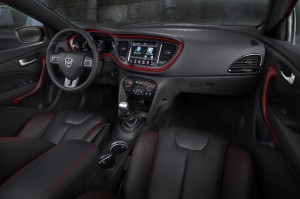

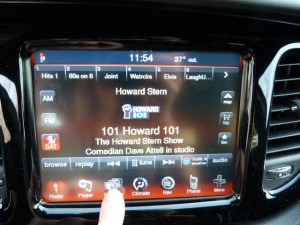
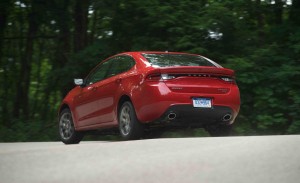









I thought I had read somewhere that the new Dart was going to be basically an Alfa Romeo 156. I think I’m biased, but I like it.
My bad. The comments I didn’t see were for another article called, “Another Measure of How We’ve Been Gypped (and Fooled)” which also referenced Dodge Darts. So, ignore my previous comment about missing comments 🙂
No problem, I wonder the same thing multiple times a day.
What happened to all of the comments? There had to be 20 or 30 comments the other day (including my comment) and today I see only five. What happened to the other comments?
I guess these new cars are ok but I miss grampaw’s 1967 Camaro with white racing stripe down the middle. He worked at Ford for 33 years but loved that ol’ Camaro.
You’re right. The market segment it fits, and its general appearance are very reminiscent of the Neon.
I don’t say that “like its a bad thing.”
But its not particularly awesome either.
Mom had a 1970’s Dart — in that awful 70’s tan color. The engine & transmission was reliable, but the rest of the car wasn’t (cooling issues??), so she eventually traded it.
With the new Darts styling, and heft, it’s an odd duck. It looks like it’d be much faster than it actually is, yet has the fuel economy of a older hybrid (1st gen Prius). I suspect we’re going to be seeing a lot more cars designed like this.
I’ll be honest, I really like this car. It’s so hard to find a car that allows a sunroof/manual transmission combination, as well as two performance engine options -again- avalible with a 6speed manual. It’s avaliblity will probably be limited after these first few years, but its still nice while it lasts. Love the interior as well. I’d buy one.
One worry: changing those back light bulbs may be tedious if they fail often… there’s so many.
Throw it in the woods. You got that right.